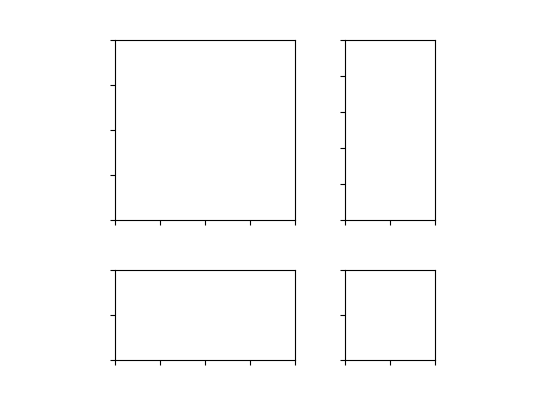Note
Click here to download the full example code
Overview of mpl_toolkits.axes_grid1#
axes_grid1 provides the following features:
Helper classes (ImageGrid, RGBAxes, AxesDivider) to ease the layout of axes displaying images with a fixed aspect ratio while satisfying additional constraints (matching the heights of a colorbar and an image, or fixing the padding between images);
ParasiteAxes (twinx/twiny-like features so that you can plot different data (e.g., different y-scale) in a same Axes);
AnchoredArtists (custom artists which are placed at an anchored position, similarly to legends).

axes_grid1#
ImageGrid#
In Matplotlib, axes location and size are usually specified in normalized
figure coordinates (0 = bottom left, 1 = top right), which makes
it difficult to achieve a fixed (absolute) padding between images.
ImageGrid can be used to achieve such a padding; see
its docs for detailed API information.
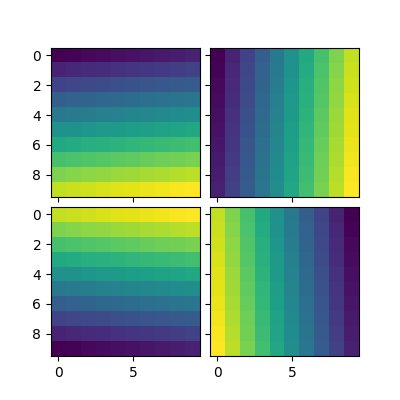
The position of each axes is determined at the drawing time (see AxesDivider), so that the size of the entire grid fits in the given rectangle (like the aspect of axes). Note that in this example, the paddings between axes are fixed even if you change the figure size.
Axes in the same column share their x-axis, and axes in the same row share their y-axis (in the sense of
sharex,sharey). Additionally, Axes in the same column all have the same width, and axes in the same row all have the same height. These widths and heights are scaled in proportion to the axes' view limits (xlim or ylim).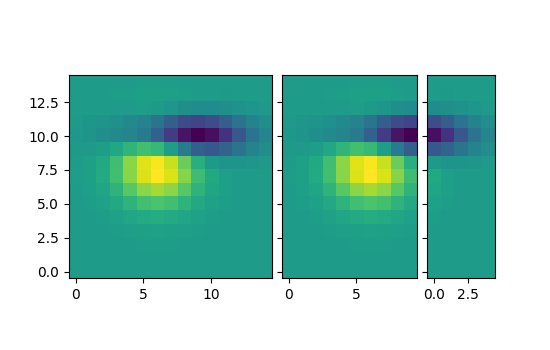
The examples below show what you can do with ImageGrid.

AxesDivider Class#
Behind the scenes, ImageGrid (and RGBAxes, described below) rely on
AxesDivider, whose role is to calculate the
location of the axes at drawing time.
Users typically do not need to directly instantiate dividers
by calling AxesDivider; instead,
make_axes_locatable can be used to create a divider
for an Axes:
ax = subplot(1, 1, 1)
divider = make_axes_locatable(ax)
AxesDivider.append_axes can then be used to create a new axes on a given
side ("left", "right", "top", "bottom") of the original axes.
colorbar whose height (or width) is in sync with the main axes#

scatter_hist.py with AxesDivider#
The Scatter plot with histograms example can be
rewritten using make_axes_locatable:
axScatter = plt.subplot()
axScatter.scatter(x, y)
axScatter.set_aspect(1.)
# create new axes on the right and on the top of the current axes.
divider = make_axes_locatable(axScatter)
axHistx = divider.append_axes("top", size=1.2, pad=0.1, sharex=axScatter)
axHisty = divider.append_axes("right", size=1.2, pad=0.1, sharey=axScatter)
# the scatter plot:
# histograms
bins = np.arange(-lim, lim + binwidth, binwidth)
axHistx.hist(x, bins=bins)
axHisty.hist(y, bins=bins, orientation='horizontal')
See the full source code below.
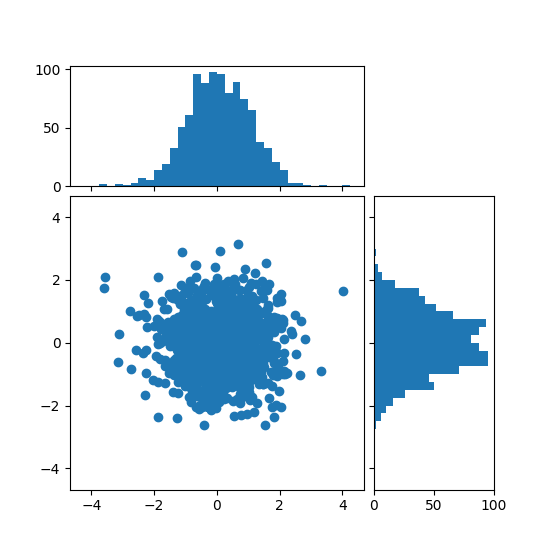
The Scatter Histogram (Locatable Axes) using the AxesDivider has some advantages over the original Scatter plot with histograms in Matplotlib. For example, you can set the aspect ratio of the scatter plot, even with the x-axis or y-axis is shared accordingly.
ParasiteAxes#
The ParasiteAxes is an Axes whose location is identical to its host axes. The location is adjusted in the drawing time, thus it works even if the host change its location (e.g., images).
In most cases, you first create a host axes, which provides a few
methods that can be used to create parasite axes. They are twinx,
twiny (which are similar to twinx and twiny in the matplotlib) and
twin. twin takes an arbitrary transformation that maps between the
data coordinates of the host axes and the parasite axes. The draw
method of the parasite axes are never called. Instead, host axes
collects artists in parasite axes and draws them as if they belong to
the host axes, i.e., artists in parasite axes are merged to those of
the host axes and then drawn according to their zorder. The host and
parasite axes modifies some of the axes behavior. For example, color
cycle for plot lines are shared between host and parasites. Also, the
legend command in host, creates a legend that includes lines in the
parasite axes. To create a host axes, you may use host_subplot or
host_axes command.
Example 1. twinx#
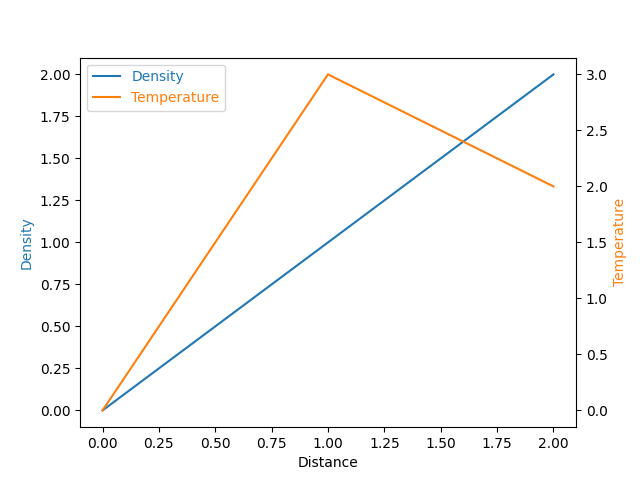
Example 2. twin#
twin without a transform argument assumes that the parasite axes has the
same data transform as the host. This can be useful when you want the
top(or right)-axis to have different tick-locations, tick-labels, or
tick-formatter for bottom(or left)-axis.
ax2 = ax.twin() # now, ax2 is responsible for "top" axis and "right" axis
ax2.set_xticks([0., .5*np.pi, np.pi, 1.5*np.pi, 2*np.pi],
labels=["0", r"$\frac{1}{2}\pi$",
r"$\pi$", r"$\frac{3}{2}\pi$", r"$2\pi$"])
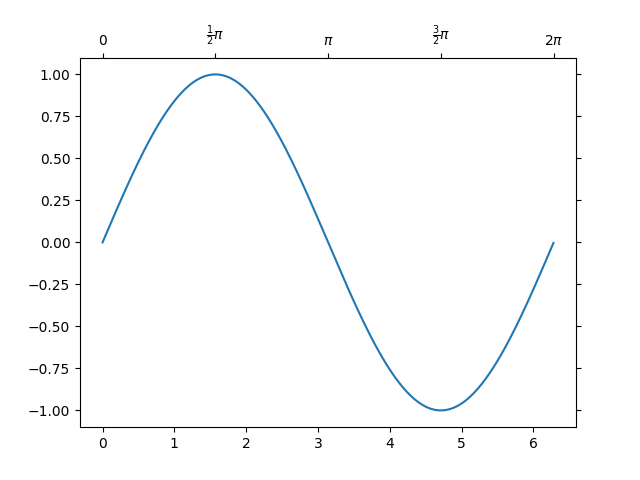
A more sophisticated example using twin. Note that if you change the x-limit in the host axes, the x-limit of the parasite axes will change accordingly.
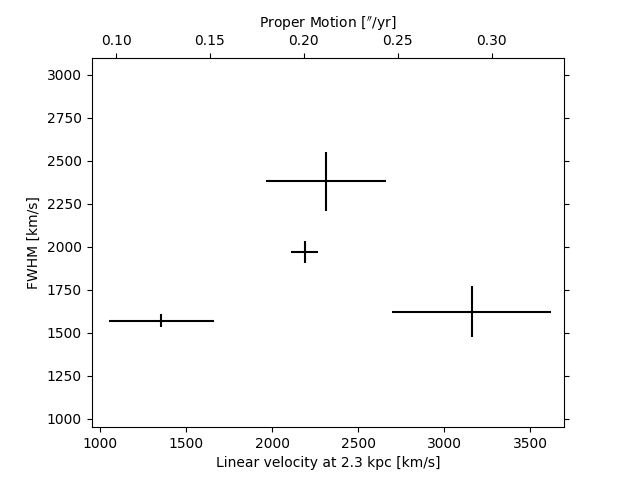
AnchoredArtists#
axes_grid1.anchored_artists is a collection of artists whose location
is anchored to the (axes) bbox, similarly to legends. These artists derive
from offsetbox.OffsetBox, and the artist need to be drawn in canvas
coordinates. There is limited support for arbitrary transforms. For example,
the ellipse in the example below will have width and height in data coordinates.
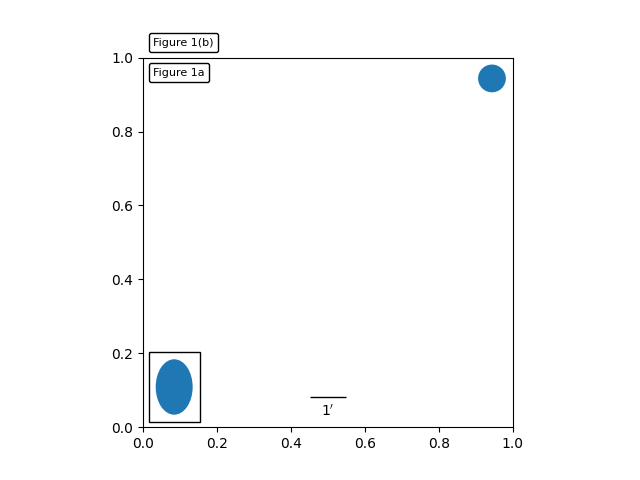
InsetLocator#
See also
Axes.inset_axes and Axes.indicate_inset_zoom in the main library.
axes_grid1.inset_locator provides helper classes and functions to
place inset axes at an anchored position of the parent axes, similarly to
AnchoredArtist.
inset_locator.inset_axes creates an inset axes whose size is either fixed,
or a fixed proportion of the parent axes:
inset_axes = inset_axes(parent_axes,
width="30%", # width = 30% of parent_bbox
height=1., # height = 1 inch
loc='lower left')
creates an inset axes whose width is 30% of the parent axes and whose height is fixed at 1 inch.
inset_locator.zoomed_inset_axes creates an inset axes whose data scale is
that of the parent axes multiplied by some factor, e.g.
inset_axes = zoomed_inset_axes(ax,
0.5, # zoom = 0.5
loc='upper right')
creates an inset axes whose data scale is half of the parent axes. This can be useful to mark the zoomed area on the parent axes:
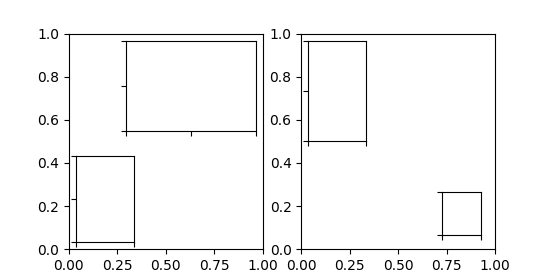
inset_locator.mark_inset allows marking the location of the area represented
by the inset axes:
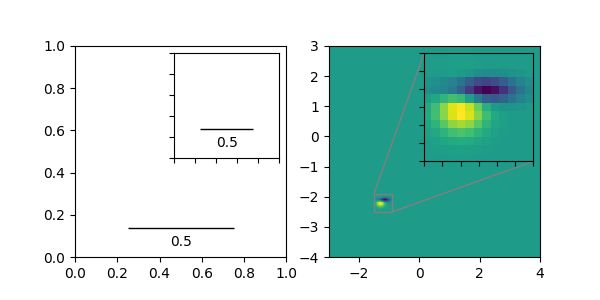
RGBAxes#
RGBAxes is a helper class to conveniently show RGB composite images. Like ImageGrid, the location of axes are adjusted so that the area occupied by them fits in a given rectangle. Also, the xaxis and yaxis of each axes are shared.
from mpl_toolkits.axes_grid1.axes_rgb import RGBAxes
fig = plt.figure()
ax = RGBAxes(fig, [0.1, 0.1, 0.8, 0.8], pad=0.0)
r, g, b = get_rgb() # r, g, b are 2D images.
ax.imshow_rgb(r, g, b)
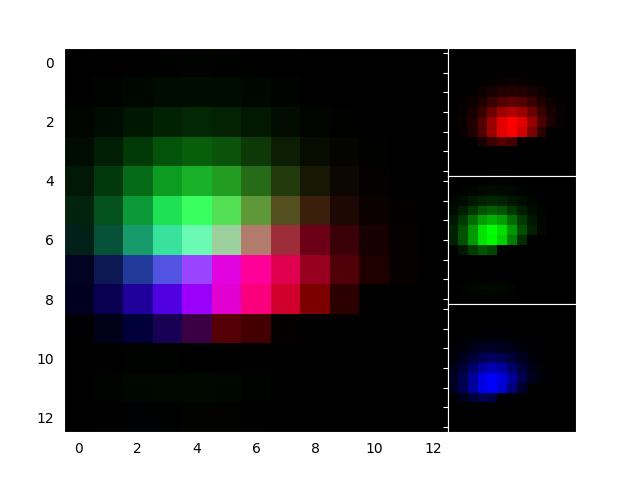
AxesDivider#
The mpl_toolkits.axes_grid1.axes_divider module provides helper classes
to adjust the axes positions of a set of images at drawing time.
axes_sizeprovides a class of units that are used to determine the size of each axes. For example, you can specify a fixed size.Divideris the class that calculates the axes position. It divides the given rectangular area into several areas. The divider is initialized by setting the lists of horizontal and vertical sizes on which the division will be based. Then usenew_locator(), which returns a callable object that can be used to set the axes_locator of the axes.
Here, we demonstrate how to achieve the following layout: we want to position
axes in a 3x4 grid (note that Divider makes row indices start from the
bottom(!) of the grid):
+--------+--------+--------+--------+
| (2, 0) | (2, 1) | (2, 2) | (2, 3) |
+--------+--------+--------+--------+
| (1, 0) | (1, 1) | (1, 2) | (1, 3) |
+--------+--------+--------+--------+
| (0, 0) | (0, 1) | (0, 2) | (0, 3) |
+--------+--------+--------+--------+
such that the bottom row has a fixed height of 2 (inches) and the top two rows have a height ratio of 2 (middle) to 3 (top). (For example, if the grid has a size of 7 inches, the bottom row will be 2 inches, the middle row also 2 inches, and the top row 3 inches.)
These constraints are specified using classes from the
axes_size module, namely:
from mpl_toolkits.axes_grid1.axes_size import Fixed, Scaled
vert = [Fixed(2), Scaled(2), Scaled(3)]
(More generally, axes_size classes define a
get_size(renderer) method that returns a pair of floats -- a relative size,
and an absolute size. Fixed(2).get_size(renderer) returns (0, 2);
Scaled(2).get_size(renderer) returns (2, 0).)
We use these constraints to initialize a Divider object:
rect = [0.2, 0.2, 0.6, 0.6] # Position of the grid in the figure.
vert = [Fixed(2), Scaled(2), Scaled(3)] # As above.
horiz = [...] # Some other horizontal constraints.
divider = Divider(fig, rect, horiz, vert)
then use Divider.new_locator to create an AxesLocator instance for a
given grid entry:
locator = divider.new_locator(nx=0, ny=1) # Grid entry (1, 0).
and make it responsible for locating the axes:
ax.set_axes_locator(locator)
The AxesLocator is a callable object that returns the location and size of
the cell at the first column and the second row.
Locators that spans over multiple cells can be created with, e.g.:
# Columns #0 and #1 ("0-2 range"), row #1.
locator = divider.new_locator(nx=0, nx1=2, ny=1)
See the example,
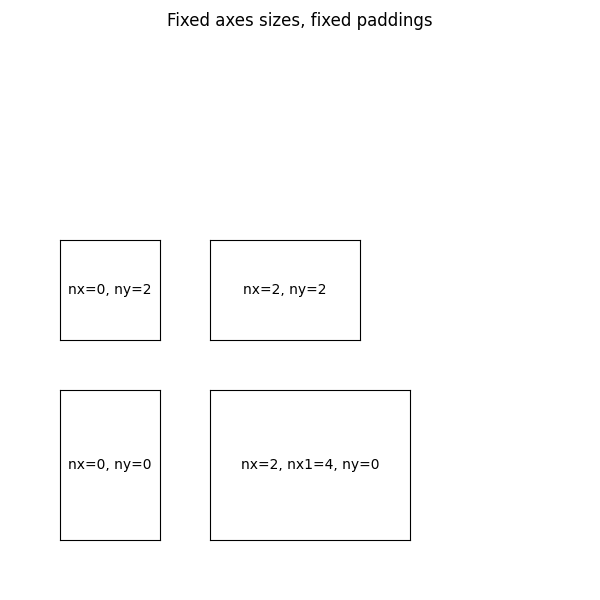
You can also adjust the size of each axes according to its x or y data limits (AxesX and AxesY).
